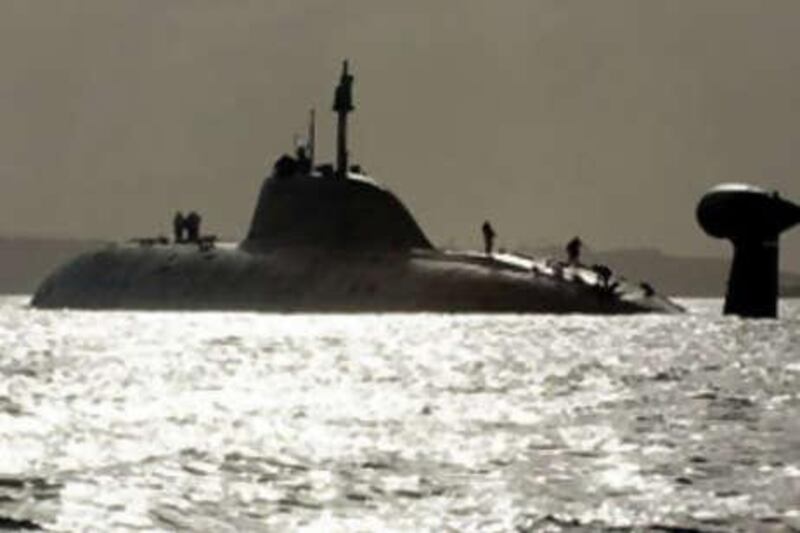The construction of the Nerpa, an Akula II class nuclear attack submarine, began in 1991 but had been suspended for more than a decade because of funding shortages, RIA-Novosti reported. Mr Felgenhauer described Akula II class vessels as "the backbone of Russians naval nuclear attack". "This is a very important model of submarine," Mr Felgenhauer said. "If it was the fire-extinguishing system that killed the crew, then they may have to make repairs on all the other boats." Dmitry Medvedev, the Russian president, ordered the prosecutor general, Yury Chaika, and Anatoly Serdyukov, the defence minister, to oversee the investigation of the accident and keep him abreast of developments, the Kremlin said in a statement issued on Saturday night. Mr Medvedev instructed Mr Serdyukov to assist the victims' families, the Kremlin statement said. Mr Serdyukov's first deputy, Alexander Kolmakov, and the Russian navy chief, Vladimir Vysotsky, had set off for Russia's Pacific Coast after the accident, Mr Dygalo said. Saturday's accident was the deadliest Russian submarine accident since the nuclear-powered Kursk submarine sank in the Barents Sea in Aug 2000, killing all 118 sailors on board.Russian investigators said at least 23 of the sailors survived the explosion that sunk the Kursk. Vladimir Ustinov, who was prosecutor general then, said the Kursk sailors lived for just eight hours after the blast. In Aug 2003, a K-159 submarine sank in the Barents Sea as it was being towed to a scrap yard for decommissioning, killing nine sailors. In Aug 2005, a Russian mini-submarine became ensnared in undersea cables in the Pacific, but a remote-controlled British vehicle managed to cut it loose, allowing the craft to resurface after three days under water. All seven sailors on board survived. The Kursk disaster was a seminal moment in the presidency of Vladimir Putin, now Russia's prime minister, who faced harsh criticism after he continued to holiday in Russia's Black Sea resort of Sochi after the submarine sank. Mr Putin did not publicly address the Kursk accident for several days, and the defence ministry failed to conduct its own rescue operation, seeking foreign assistance only after it was too late to rescue any of the sailors. Mr Putin was reported to have been outraged over critical television reports of his handling of the crisis. At the time, Sergei Dorenko, a controversial Russian television and radio personality, aired a report featuring the Kursk sailors' grieving widows. The show, hosted by Mr Dorenko, then the country's most famous television anchorman, never returned to the air after the report. Mr Dorenko has said publicly that Mr Putin called him in for a meeting and accused him of hiring prostitutes to impersonate the Kursk sailors' widows. After the sinking of the Kursk, the Kremlin gradually gained control over the three major national television networks, which now rarely, if ever, portray the government in a critical light. The Kursk disaster also prompted one of Mr Putin's most infamous public moments. In a Sept 2000 interview with CNN's Larry King, Mr Putin was asked what happened to the submarine. Mr Putin flashed a mischievous smile and replied: "It sank." cschreck@thenational.ae
Breakdown on Russian nuclear sub kills 20
A test run of a new Russian nuclear-powered submarine turned to tragedy when 20 people were killed by a fire safety system malfunction.

Editor's picks
More from the national





